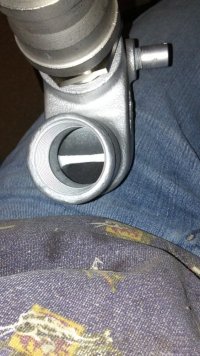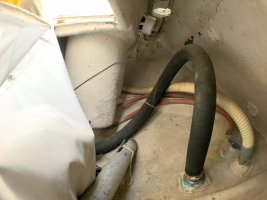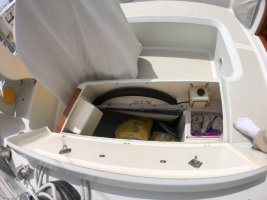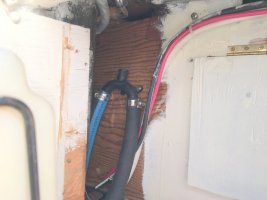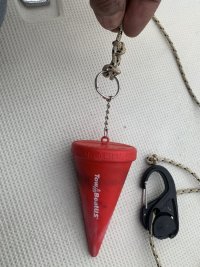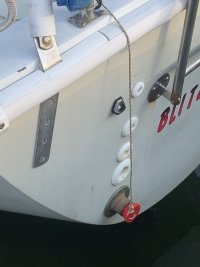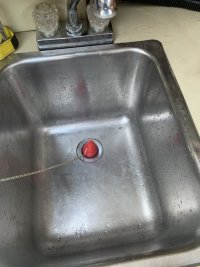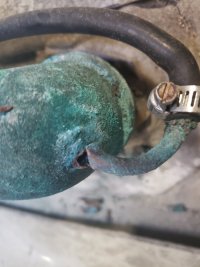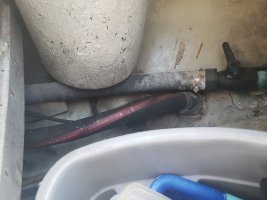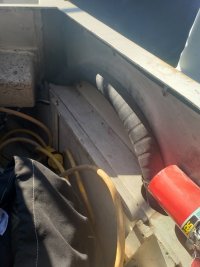My surveyor noted the exhaust elbow on the 2006 Yanmar 3Ym20 had some external rust, should be considered a consumable item, and replaced every 5 years. I put it on the to-do-list and moved on. A few weeks ago, while I was removing the old engine wiring harness, I noticed the elbow had a small crack under the rust. It didn’t seem to be leaking water or exhaust, but I figured this was a good sign to replace it before we take any trips with the boat.
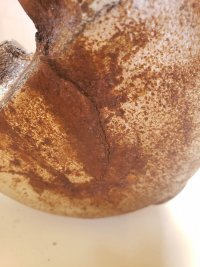
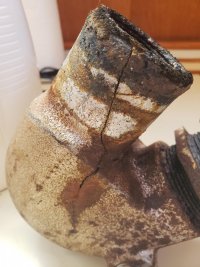
After some research, I found HDI marine and ordered a new stainless kit including the elbow, coupler, and mixing elbow. I figured all I had to do was remove the 4 bolts, water inlet hose, and exhaust hose and install the new kit. The 4 bolts and water hose were easy to remove, but the exhaust hose was stuck. I struggled with it for an hour or so without getting very far. For a quick sanity check, I called Harbor marine and asked how much 2’ of reinforced 2” exhaust hose was. When I heard it was around $25 I told him I would pick it up in an hour and I cut the old hose off. This is where the project went south.
The other end of the exhaust hose connects to a water lift muffler, but the muffler only has 1 5/8” inlet and outlets. To reduce the 2” hose to the 1 5/8 muffler, there was a small section of 1 5/8 hose inside the 2” hose.
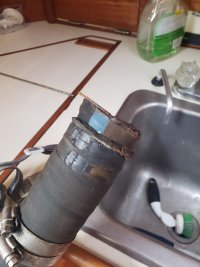
From the top of the muffler, they used 1 5/8 hose to a new Marelon valve that was threaded onto the old thru hull elbow. The old thru hull has the original siphon brake hose, but it has been plugged with a bolt under the cockpit seat and the connection is loose. I haven’t seen water or exhaust leaking from this area, but I don’t see how it wouldn’t. The thru hull looks like it’s seen better days.
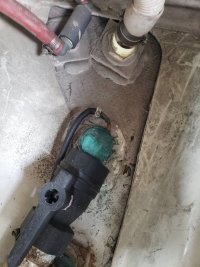
Now I’m trying to figure out what I should do. I need to do something to get from the 2” exhaust elbow to the 1 5/8 water lift muffler. As I see it, my options are:
One idea I’m kicking around is going with option 1 for the summer, then completing the rebuild when I pull the boat out of the water and have better access to the thru hull. What would you guys do? Any recommendations on the thru hull?


After some research, I found HDI marine and ordered a new stainless kit including the elbow, coupler, and mixing elbow. I figured all I had to do was remove the 4 bolts, water inlet hose, and exhaust hose and install the new kit. The 4 bolts and water hose were easy to remove, but the exhaust hose was stuck. I struggled with it for an hour or so without getting very far. For a quick sanity check, I called Harbor marine and asked how much 2’ of reinforced 2” exhaust hose was. When I heard it was around $25 I told him I would pick it up in an hour and I cut the old hose off. This is where the project went south.
The other end of the exhaust hose connects to a water lift muffler, but the muffler only has 1 5/8” inlet and outlets. To reduce the 2” hose to the 1 5/8 muffler, there was a small section of 1 5/8 hose inside the 2” hose.

From the top of the muffler, they used 1 5/8 hose to a new Marelon valve that was threaded onto the old thru hull elbow. The old thru hull has the original siphon brake hose, but it has been plugged with a bolt under the cockpit seat and the connection is loose. I haven’t seen water or exhaust leaking from this area, but I don’t see how it wouldn’t. The thru hull looks like it’s seen better days.

Now I’m trying to figure out what I should do. I need to do something to get from the 2” exhaust elbow to the 1 5/8 water lift muffler. As I see it, my options are:
- Glass around the 1 5/8 inlet to build it up to 2” and install a new 2” hose from the elbow to the muffler.
- Purchase a new water lift muffler with a 2” inlet and 1 5/8 outlet
- Replace the whole system with a new muffler, 2” hose all the way back to the thru hull, and a new thru hull / sea cock.
One idea I’m kicking around is going with option 1 for the summer, then completing the rebuild when I pull the boat out of the water and have better access to the thru hull. What would you guys do? Any recommendations on the thru hull?

